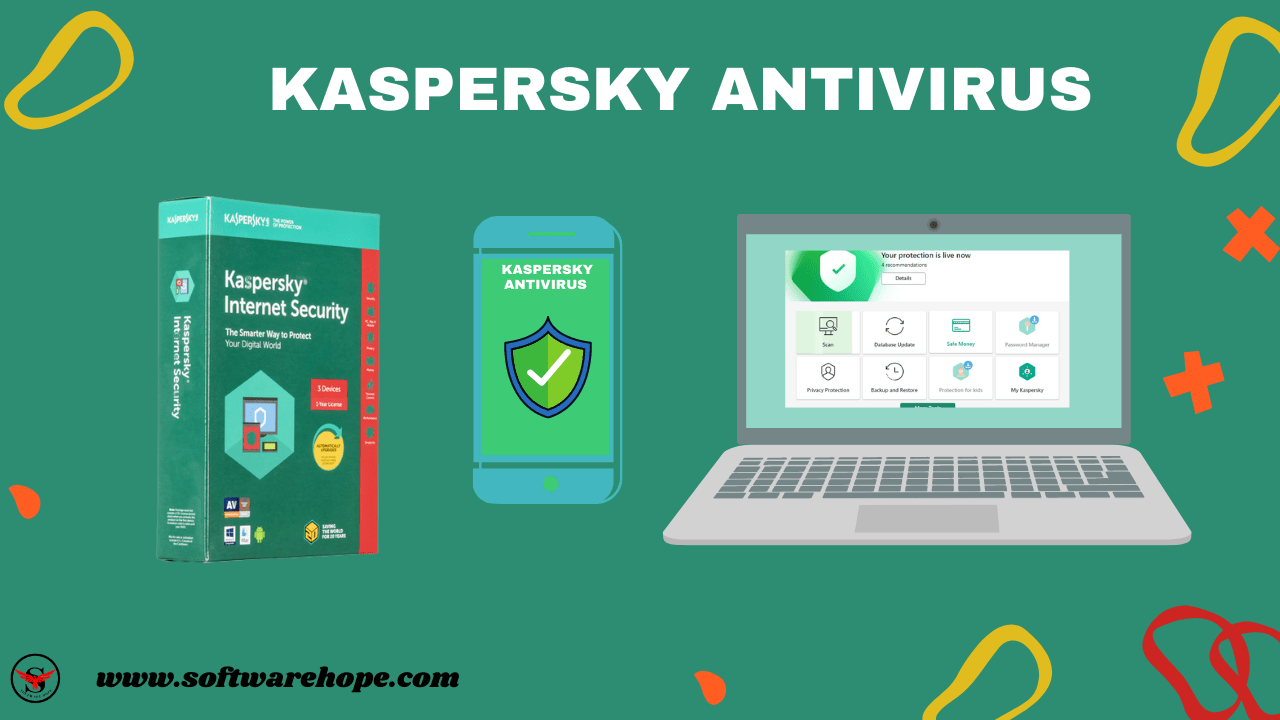So, you’re running a business or maybe thinking about starting one, and you need a way to accept payments online. That’s where payment gateways come in! Honestly, choosing the right one can feel kinda overwhelming with so many options out there. But don’t worry — I’ve got you covered. A payment gateway is basically the bridge between your customers and your bank account. When someone buys something from you, the gateway securely processes their card info and makes sure the money gets to you. Pretty cool, right?
In this article, we’re gonna look at the best payment gateways available in the USA for 2025. Whether you’re into e-commerce, running a small shop, or just need something simple for your side hustle, there’s something here for everyone. We’ll cover everything from the popular Stripe payment gateway to options like Razorpay payment gateway and tons more. You’ll see what I mean — each one has its own vibe and special features. Let’s jump in!
Table of Contents
Comparison of 15 Best Payment Gateways in USA [2025]
| Sr | Image | Name | Rating | Pricing | Compatibility | Features | Website | Details Page |
|---|---|---|---|---|---|---|---|---|
| 1 |
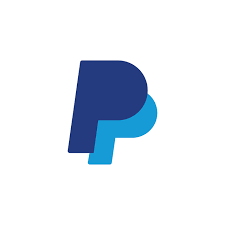 | PayPal | 4.5 | Freemium | Windows, Mac, Android, iOS, Web-based |
| Visit Website | View Details |
| 2 |
 | Stripe | 4.8 | Freemium | Windows, Mac, Linux, Android, iOS, Web-based |
| Visit Website | View Details |
| 3 |
 | Square | 4.6 | Freemium | Windows, Mac, Android, iOS, Web-based |
| Visit Website | View Details |
| 4 |
 | Shopify Payments | 4.4 | Paid | Windows, Mac, Linux, Android, iOS, Web-based |
| Visit Website | View Details |
| 5 |
 | Authorize.Net | 4.3 | Paid | Windows, Mac, Android, iOS, Web-based |
| Visit Website | View Details |
| 6 |
 | Braintree | 4.5 | Freemium | Windows, Mac, Linux, Android, iOS, Web-based |
| Visit Website | View Details |
| 7 |
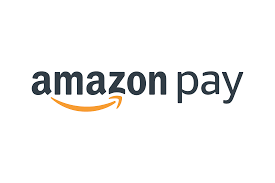 | Amazon Pay | 4.2 | Freemium | Windows, Mac, Linux, Android, iOS, Web-based |
| Visit Website | View Details |
| 8 |
| WorldPay | 4.4 | Paid | Windows, Mac, Android, iOS, Web-based |
| Visit Website | View Details |
| 9 |
 | 2Checkout | 4.1 | Paid | Windows, Mac, Linux, Android, iOS, Web-based |
| Visit Website | View Details |
| 10 |
 | Klarna | 4.3 | Freemium | Windows, Mac, Android, iOS, Web-based |
| Visit Website | View Details |
| 11 |
 | Razorpay | 4.6 | Freemium | Windows, Mac, Linux, Android, iOS, Web-based |
| Visit Website | View Details |
| 12 |
 | PayU | 4.2 | Freemium | Windows, Mac, Linux, Android, iOS, Web-based |
| Visit Website | View Details |
| 13 |
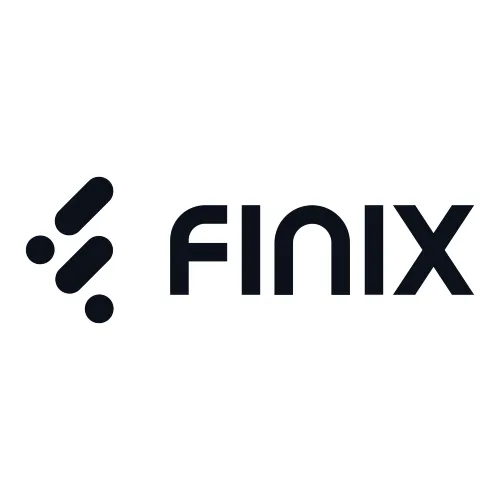 | Finix | 4.4 | Paid | Windows, Mac, Linux, Web-based |
| Visit Website | View Details |
| 14 |
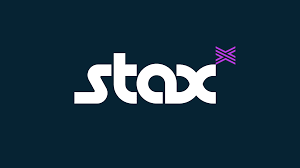 | Stax | 4.7 | Paid | Windows, Mac, Android, iOS, Web-based |
| Visit Website | View Details |
| 15 |
 | Payment Depot | 4.6 | Paid | Windows, Mac, Web-based |
| Visit Website | View Details |
1. PayPal: PayPal is one of the best payment gateways that lets you accept money online quickly and safely from customers worldwide.
PayPal is like the OG of online payments, honestly. It is been around forever and pretty much everyone knows it. This is one of the best payment gateways if you want something that customers already trust and use. It works great for small businesses, freelancers and even bigger companies. You can accept credit cards, debit cards and PayPal balance payments super flexible. The setup’s pretty straightforward too, which is nice if you are not super tech-savvy.
What makes PayPal stand out? Well, not gonna lie, it is the brand recognition. People feel safe paying with it. Plus, you do not need a separate merchant account to get started, which saves you some hassle. You can start accepting payment gateways transactions literally within minutes. There is also buyer protection, which customers really appreciate. Yep, that’s super helpful for building trust!
Key Features
- Accept payments from over 200 markets and 100+ currencies worldwide
- One-touch checkout makes it super fast for repeat customers
- Fraud protection and seller protection included in most transactions
- Easy integration with tons of e-commerce platforms like Shopify and WooCommerce
- Send invoices directly through PayPal — honestly, this one’s really helpful
- Mobile app lets you manage everything on the go, which is convenient
Pros & Cons
✅ Pros
- The best part is that almost everyone already has a PayPal account
- No monthly fees for the basic plan — you just pay per transaction
- Super easy setup process, even if you're a total beginner at this stuff
- Honestly, I liked how quickly you can get up and running with it
- Works well internationally, so you can sell to customers anywhere
- The customer trust factor is huge — people recognize the name immediately
❌ Cons
- The transaction fees can add up if you're doing high volume
- Sometimes PayPal holds funds, which can be frustrating for sellers
- Customer service isn't always the fastest, to be totally honest
- The interface feels a bit dated compared to newer payment gateways
Device Compatibility:
It runs well on all the big platforms. You can use PayPal on Windows, Mac, Android, and iPhone. The mobile apps work great, and it integrates with pretty much any website or e-commerce platform you can think of.
Pricing:
PayPal charges 2.9% + $0.30 per transaction for standard online payments in the USA. There’s no monthly fee for basic accounts — which is great. If you’re doing larger volumes, you might qualify for lower rates. International transactions cost a bit more, usually around 4.4% + a fixed fee. Not too pricey, honestly, especially when you’re just starting out.
Customer Support:
Support’s decent — they’ve got phone support, email, and a pretty extensive help center. There’s also a community forum where you can ask questions. Not sure how fast they reply during peak times, but the resources are definitely available. Live chat is there too for business accounts, which is nice.
2. Stripe: Stripe ranks among the best payment gateways for online businesses that need flexible and customizable payment options.
Stripe is probably the most developer-friendly option out there. It is one of the best payment gateways if you want full control and customization. Tech companies and online businesses love it because you can build pretty much any payment setup you want. The Stripe payment gateway can handle everything one-time payments, subscriptions, you name it. It’s super powerful and works great if you’re running an app or a SaaS business. Honestly, this might be your best pick.
So, what makes Stripe special? The flexibility is kind of crazy. You can tweak almost every little thing about how payments work on your site. It really surprised me with how many features it has stuff like automatic currency conversion and built-in fraud protection. And the way it handles recurring payments? Super smooth. You will see what I mean once you try it. It just makes things easier, especially if your setup is a bit more complex than usual.
When it comes to payment gateways, Stripe stands out for how flexible and developer-friendly it is. If you’ve been checking out others like the Razorpay payment gateway, you will notice Stripe gives you way more control. It is built for people who want things done their way and that’s what makes it one of the best payment gateways to use right now.
Key Features:
- Accept credit cards, digital wallets like Apple Pay and Google Pay seamlessly
- Built-in fraud detection with machine learning — honestly, this one’s really helpful
- Supports subscription billing and recurring payments out of the box
- Comprehensive API documentation makes customization super easy for developers
- International payment support with automatic currency conversion included
- Stripe Radar helps prevent fraudulent transactions before they happen
Pros & Cons
✅ Pros
- The best part is how customizable everything is — you control the experience
- No setup fees or monthly fees — you only pay when you make sales
- Honestly, I liked how fast payments process, usually within seconds
- Developer tools and documentation are top-notch and super detailed
- Works seamlessly with tons of platforms and programming languages
- Automatic updates mean you're always compliant with payment regulations
❌ Cons
- It can be a bit technical if you're not comfortable with code
- Customer support is mostly email-based, which might feel slow sometimes
- The dashboard has a learning curve — takes a minute to figure out
- International fees can add up if you're selling globally a lot
Device Compatibility:
Yep, Stripe works on everything. Windows, Mac, Linux — all good. There are mobile SDKs for iOS and Android development. Plus it integrates with basically every major e-commerce platform, from Shopify to custom-built websites.
Pricing:
Stripe charges 2.9% + $0.30 per successful card transaction in the USA. There’s a free plan too — which is great because you pay nothing until you start making money. International cards cost 3.9% + $0.30. Currency conversion adds 1% on top. Not too pricey, honestly, considering all the features you get.
Customer Support:
Support’s available through email and chat for most issues. There’s an incredibly detailed documentation center that honestly answers most questions. Phone support is available for higher-tier accounts. Not sure how fast they reply during busy periods, but the help resources are really comprehensive.
3. Square: Square is one of the best payment gateways for small shops that sell both online and in person with easy setup.
Square’s awesome if you need both online and in-person payment options. It’s honestly one of the best payment gateways for small businesses and local shops. What’s cool about Square is that it does pretty much everything — point-of-sale systems, online payments, invoicing, all in one place. If you run a coffee shop, boutique, or restaurant, this is a big win. And the hardware? Super sleek, not gonna lie.
What really makes Square stand out is the all-in-one setup. You get the card reader, the software, and even an online store builder — everything’s included. That’s a huge deal if you don’t want to mess around with a bunch of different payment gateways or tools. The pricing is clear too, which I really like. You’ll see what I mean — there aren’t any weird hidden fees sneaking in like with some other options such as Razorpay payment gateway or Stripe payment gateway.
Key Features:
- Free point-of-sale app that works on iPad, iPhone, or Android devices
- Accept payments in person, online, and through invoices — all in one system
- Built-in inventory management helps you track stock levels automatically
- Instant deposit option available for a small fee if you need money fast
- Employee management tools included for scheduling and tracking hours
- Honest pricing with no monthly fees for basic accounts — really straightforward
Pros & Cons
✅ Pros
- The best part is getting started is completely free with basic features
- Hardware like card readers are affordable and look really professional
- Honestly, I liked how everything syncs together — sales, inventory, everything
- Same flat rate pricing whether you're in-person or online transactions
- Great for businesses that sell both in stores and on websites
- Customer-facing displays make checkout smoother and more transparent
❌ Cons
- Hmm... not as many customization options compared to Stripe or others
- If your account gets flagged, funds can be held for investigation
- International payment support is limited compared to bigger gateways
- The online store builder is decent but not as robust as Shopify
Device Compatibility:
Yeah, it works great on iOS and Android for the mobile POS. The online dashboard runs on any browser — Windows, Mac, whatever. The card readers connect via Bluetooth or headphone jack, so they’re pretty universal.
Pricing:
Square charges 2.6% + $0.10 for in-person transactions and 2.9% + $0.30 for online payments in the USA. There’s a free plan too — which is great for new businesses. No monthly fees for the basic version. If you want advanced features like custom reports, there are paid plans starting around $29/month. Honestly, the free version is solid for most small businesses.
Customer Support:
Support’s decent — there’s phone support, email, and live chat available. The help center has tons of articles and video tutorials. Not sure how fast response times are during peak hours, but they’re generally pretty helpful from what I’ve heard.
4. Shopify Payments: Shopify Payments is among the best payment gateways built right into Shopify stores for smooth, easy checkouts.
If you are already using Shopify for your online store, Shopify Payments is kinda a no-brainer. It’s one of the best payment gateways that’s built right into the platform. So everything just works together smoothly. You don’t need to set up third-party payment processors or anything — it’s all integrated. This makes it super convenient for e-commerce businesses that want to keep things simple.
What makes Shopify Payments special? Well, you avoid those annoying transaction fees that Shopify charges when you use other payment gateways. Not gonna lie, that saves you real money over time. Plus, the whole checkout experience is optimized for conversions, which means more customers actually complete their purchases. You’ll see what I mean — it’s designed to make buying as easy as possible.
Key Features:
- Built directly into Shopify, so setup takes literally just a few clicks
- No additional transaction fees when you use it — saves money compared to third-party options
- Accept all major credit cards plus Apple Pay, Google Pay, and Shop Pay
- Automatic fraud analysis helps protect you from sketchy transactions
- Multi-currency support lets you sell in different countries easily
- Chargeback protection included for eligible transactions — honestly helpful
Pros & Cons
✅ Pros
- The best part is how seamlessly it integrates with your Shopify store
- You avoid the extra transaction fees that come with using external gateways
- Honestly, I liked how the checkout process is super optimized and fast
- Payments appear right in your Shopify dashboard — everything's in one place
- Fast payouts, usually within 2-3 business days to your bank account
- No need to redirect customers to external payment pages during checkout
❌ Cons
- It's only available in certain countries, not worldwide yet
- If you're not on Shopify, you can't use it at all — locked to the platform
- Some businesses report account holds for seemingly random reasons occasionally
- Customer service goes through Shopify support, which can be hit or miss
Device Compatibility:
Yep, since it’s built into Shopify, it works wherever Shopify works. That means any browser on Windows, Mac, or Linux. The Shopify mobile app lets you manage payments on iOS and Android devices too.
Pricing:
The rates depend on your Shopify plan. Basic Shopify gets 2.9% + $0.30 per transaction, standard Shopify is 2.7% + $0.30, and Advanced is 2.4% + $0.30. There’s a free plan too in the sense that there’s no monthly payment gateway fee — which is great. Just your regular Shopify subscription. Honestly pretty competitive pricing overall.
Customer Support:
Support’s available through Shopify’s main support channels — 24/7 phone, email, and live chat. There’s a huge help center too with guides specifically for Shopify Payments. Not sure about average wait times, but having 24/7 availability is definitely nice.
5. Authorize.Net: Authorize.Net is one of the best payment gateways trusted by businesses for secure and reliable credit card processing.
Authorize.Net has been around since the late ’90s, so yeah, it’s kind of a veteran when it comes to the best payment gateways. It’s owned by Visa now, which already tells you it’s got some serious trust behind it. This one’s a great pick for businesses that want something steady and reliable. It handles all the usual stuff — credit cards, e-checks, and digital payments. A lot of well-known businesses still use it today because it’s proven to work and super dependable.
What really makes Authorize.Net stand out is its strong security and fraud protection. If you’re even a little worried about safety (and you should be), this one’s a solid option. It also plays really well with other tools — it connects easily with tons of shopping carts and business software. And if you’re using any popular e-commerce platforms, you’ll see how simple it is to integrate with payment gateways like this one.
In short, Authorize.Net might not be flashy like Stripe payment gateway or Razorpay payment gateway, but it’s been around long enough to earn its spot among the best payment gateways out there.
Key Features:
- Advanced fraud detection suite helps prevent suspicious transactions automatically
- Accept credit cards, debit cards, and electronic checks all through one gateway
- Virtual terminal lets you process payments manually when needed — really helpful
- Recurring billing tools make subscriptions and memberships easy to manage
- Customer information manager securely stores payment details for repeat customers
- Detailed transaction reporting helps you track and analyze your sales data
Pros & Cons
✅ Pros
- The best part is the reputation and reliability — they've been doing this forever
- Works with pretty much every major shopping cart and e-commerce platform out there
- Honestly, I liked the robust fraud prevention tools that come standard
- Virtual terminal is super useful for phone orders or manual entry
- Strong customer authentication helps reduce chargebacks significantly
- Extensive documentation makes troubleshooting and setup easier
❌ Cons
- There's a monthly gateway fee on top of transaction fees
- The interface looks pretty dated compared to newer, modern payment gateways
- Setup can be a bit complicated if you're not technically inclined
- Customer support isn't always the most responsive from what I've heard
Device Compatibility:
Yeah, it works on all the standard platforms. The web interface runs on any browser — Windows, Mac, whatever you’re using. There are mobile apps for iOS and Android for managing transactions on the go.
Pricing:
Authorize.Net charges a monthly gateway fee of $25, plus per-transaction fees starting at 2.9% + $0.30. There’s also usually a $0.10 daily batch fee. Not too pricey for established businesses, honestly, but it might be expensive if you’re just starting out with low volume.
Customer Support:
Support’s available through phone and email during business hours. There’s a comprehensive knowledge base and documentation center. Live chat is available, which is nice. Not sure how quickly they respond, but support is definitely accessible when you need help.
6. Braintree: Braintree is one of the best payment gateways that accepts PayPal, cards, and Venmo all through one simple setup.
Braintree is owned by PayPal, but it’s kind of like the cooler, more advanced cousin. It is one of the best payment gateways for businesses that need more than just the basics. Big names like Uber and Airbnb use it, so you know it can handle serious traffic and payments. The best part? You still get PayPal’s trust and support, but with way more freedom to customize things your way. If you are running an app or marketplace, that’s a huge win.
What really makes Braintree stand out is how easy it is for developers to work with — kind of like the Stripe payment gateway. And honestly, it’s super convenient that you can accept PayPal, Venmo, credit cards and digital wallets all through one setup. Plus, it supports tons of currencies, which is awesome if you sell to people in different countries. You will see what I mean it is built for growth and for businesses that need a payment gateway that can handle complex stuff.
Key Features:
- Accept PayPal, Venmo, credit cards, and digital wallets all in one integration
- Supports over 130 currencies for international transactions — honestly impressive
- Built-in fraud protection tools powered by PayPal’s technology
- Recurring billing and subscription management included out of the box
- Vault securely stores customer payment information for future purchases
- Split payments feature is perfect for marketplace-style businesses
Pros & Cons
✅ Pros
- The best part is accepting multiple payment methods through just one setup
- No monthly fees or setup fees — you only pay transaction fees
- Honestly, I liked how it handles international payments smoothly
- Developer-friendly with great documentation and SDKs for multiple languages
- Backed by PayPal's infrastructure, so reliability is excellent
- Same pricing whether customers pay with cards or PayPal — nice and simple
❌ Cons
- Customer support can be slow if you're on the basic plan
- The dashboard interface is functional but not the prettiest or most intuitive
- Setup requires some technical knowledge — not super beginner-friendly
- Account approval process can take a few days sometimes
Device Compatibility:
Yep, Braintree works everywhere. The SDKs support iOS, Android, JavaScript, Ruby, Python, PHP — basically every major platform. It works on Windows, Mac, and Linux for server-side stuff.
Pricing:
Braintree charges 2.9% + $0.30 per transaction for credit and debit cards in the USA. PayPal and Venmo transactions are the same rate. There’s a free plan too — which is great because there’s no monthly fee. International cards cost 3.9% + $0.30. Honestly pretty competitive compared to other payment gateways.
Customer Support:
Support’s decent — email and phone support are available. There’s extensive documentation and a developer community. Not sure about response times, but they do offer priority support for larger businesses. The help center is pretty thorough too.
7. Amazon Pay: Amazon Pay is among the best payment gateways letting customers checkout fast using their existing Amazon accounts.
Amazon Pay lets people use their Amazon account to pay on your website — which is kinda genius, honestly. It’s one of the best payment gateways if you want to use that built-in Amazon trust. Tons of people already have Amazon accounts with their cards saved, so checkout becomes super quick. That’s huge for online stores that want to stop customers from leaving their cart halfway.
So, what makes Amazon Pay special? Easy — shoppers don’t have to type their payment info again. It’s already saved in their Amazon account. That simple step saves time and makes people way more likely to finish their purchase. And here’s the best part: Amazon’s fraud protection keeps your transactions safe, so you don’t have to stress about that. You’ll see what I mean — people trust Amazon, so they feel a lot more comfortable paying through payment gateways like this one.
It’s just smooth, safe, and super convenient — pretty much everything you’d want from one of the best payment gateways out there (right up there with Razorpay or Stripe payment gateway).
Key Features:
- Customers can check out using their existing Amazon account credentials
- Voice payments through Alexa devices for a futuristic shopping experience
- Built-in fraud protection backed by Amazon’s sophisticated systems
- Mobile-optimized checkout works smoothly on phones and tablets
- Supports recurring payments for subscription-based businesses
- Works on websites, mobile apps, and even Alexa skills — honestly versatile
Pros & Cons
✅ Pros
- The best part is customers already trust and use Amazon for payments
- Checkout is super fast since payment info is pre-filled from Amazon accounts
- Honestly, I liked how it reduces cart abandonment with familiar payment options
- Amazon handles the payment security and fraud prevention for you
- No need for customers to create yet another account on your website
- Integration is pretty straightforward with most e-commerce platforms
❌ Cons
- The transaction fees are a bit higher than some competitors
- Only really useful if your target customers are Amazon users already
- The branding is very Amazon-focused, which might not fit every website aesthetic
- Limited customization options compared to other payment gateways
Device Compatibility:
Yeah, it works on all major platforms. The integration works on Windows, Mac, and Linux servers. There are SDKs for iOS and Android mobile development. It integrates with most popular e-commerce platforms too.
Pricing:
Amazon Pay charges 2.9% + $0.30 per domestic transaction in the USA. For sales under $10, the fee is 5% + $0.05. There’s a free plan too in the sense that there’s no monthly fee — which is great. Just the per-transaction costs. Honestly a bit pricier than some payment gateways, but the conversion boost might make up for it.
Customer Support:
Support’s available through email and phone for merchants. There’s a comprehensive help center with setup guides and troubleshooting. Not sure about typical response times, but Amazon generally has decent support infrastructure. Developer forums are also available.
8. WorldPay: WorldPay is one of the best payment gateways for businesses selling globally with support for hundreds of currencies.
WorldPay (now part of FIS) is a big name in the payment processing world. It is one of the best payment gateways if your business runs in different countries or needs high-level features. They handle billions of payments every year, so they clearly know what they are doing. If you’re running a large business or want to grow worldwide, this one’s worth checking out.
So, what makes WorldPay stand out? Well, they support hundreds of payment methods from all around the world. That is huge if you are selling globally and want to accept local payment options too. Their fraud protection tools are super smart and really strong. You will see what I mean they have got different setups for small stores, big brands and even huge companies that need to manage payments at a massive scale.
It is kind of like how Stripe payment gateway and Razorpay payment gateway are great for growing businesses but WorldPay takes it to another level for big, global operations. That is what makes it one of the best payment gateways out there.
Key Features:
- Accept over 300 payment types from around the globe — incredibly comprehensive
- Advanced fraud prevention with machine learning and risk management tools
- Multi-currency support with competitive foreign exchange rates built in
- Omnichannel capabilities let you accept payments online, in-store, and mobile
- Tokenization securely stores customer payment data for repeat purchases
- Detailed reporting and analytics help you understand your payment data
Pros & Cons
✅ Pros
- The best part is the sheer number of payment methods and currencies supported
- Enterprise-level security and compliance with all major standards
- Honestly, I liked how scalable it is — grows with your business
- Strong international presence means support in multiple regions
- Flexible integration options work with pretty much any system
- Excellent for high-volume businesses that need reliability
❌ Cons
- Pricing can be complicated with multiple fee structures
- Might be overkill if you're just a small business with simple needs
- Customer service quality varies depending on your account tier
- The contract terms can be pretty rigid and long-term sometimes
Device Compatibility:
Yep, WorldPay works across all platforms. Web integrations work on any operating system. Mobile SDKs are available for iOS and Android. It integrates with major e-commerce platforms and also offers point-of-sale solutions.
Pricing:
WorldPay’s pricing varies significantly based on business size and needs. Transaction fees typically start around 2.9% + $0.30 for small businesses but can be negotiated for higher volumes. There’s usually a monthly gateway fee too. Not too pricey for larger businesses, honestly, but you’ll need to contact them for exact quotes.
Customer Support:
Support’s available 24/7 through phone and email for most accounts. There’s a knowledge base and technical documentation. Not sure about response speeds, but they do offer dedicated account managers for bigger clients. Support quality is generally professional and thorough.
9. 2Checkout: 2Checkout is one of the best payment gateways for selling digital products and subscriptions to customers worldwide.
If you sell digital goods or online services around the world, 2Checkout (now called Verifone) is one of the best payment gateways you can choose. It’s a top pick for software companies and subscription businesses, and for good reason. It really shines at handling all the complicated parts of global sales, like taxes and different country rules. If you’re selling to customers in other countries, that’s a huge help.
So what’s so special about it? Well, they act as the “merchant of record.” That pretty much means they handle all the legal and tax stuff for you. It’s a big relief if you don’t want to deal with complicated paperwork for every single country. And that’s not all—they’re also great at managing recurring payments. If your business runs on subscriptions, you’ll see how smooth it works.
It’s built for payment gateways that need to handle complex billing and global sales. It’s kind of like how the Stripe payment gateway or Razorpay payment gateway operates, but with a stronger focus on selling worldwide.
Key Features:
- Supports over 200 countries and territories with local payment methods
- Built-in subscription management for recurring billing — really comprehensive
- Acts as merchant of record, handling tax compliance and regulations for you
- Shopping cart abandonment recovery tools help recapture lost sales
- Multi-currency pricing lets you display prices in customers’ local currencies
- Fraud prevention with machine learning constantly improving detectio
Pros & Cons
✅ Pros
- The best part is not having to worry about international tax compliance
- Great for SaaS and software businesses with subscription models
- Honestly, I liked how many international payment methods they support
- Built-in shopping cart makes it easy to start selling quickly
- Handles currency conversion and displays local prices automatically
- Good tools for managing recurring billing and subscription changes
❌ Cons
- The fees are higher than some competitors, especially for digital goods
- Account approval process can be lengthy and requires documentation
- The interface feels somewhat outdated compared to newer platforms
- Customer support response times can be slow during busy periods
Device Compatibility:
Yeah, it works on all major platforms. The API integrates with Windows, Mac, and Linux systems. There are plugins for popular e-commerce platforms. Mobile checkout works smoothly on iOS and Android devices.
Pricing:
2Checkout charges 3.5% + $0.35 per transaction for most sales, which is a bit higher than average. There’s a monthly fee of $49 for the full platform. For digital goods and certain regions, fees can be higher. Honestly a bit pricey compared to simpler payment gateways, but the tax compliance service adds value.
Customer Support:
Support’s decent — available through email and phone during business hours. There’s a help center with articles and integration guides. Not sure how fast they typically respond, but they do have dedicated support for technical integration questions.
10. Klarna: Klarna is among the best payment gateways offering buy now, pay later options that help customers afford bigger purchases.
Klarna’s a bit different from the usual payment gateways. It’s all about the “buy now, pay later” thing. Honestly, it’s one of the best payment gateways if you want to give your customers flexible payment choices. People can split what they buy into smaller payments or pay later, and that actually makes them spend more. Younger shoppers especially love this option. It’s kind of cool how it’s changed the way people shop online.
What makes Klarna stand out? You get your money right away, while your customer pays over time — pretty awesome, right? It can really help boost your sales because buyers can afford bigger stuff. And the best part? Klarna takes care of the risk if someone doesn’t pay. You’ll see what I mean — when you use payment gateways like Klarna, Stripe payment gateway, or even Razorpay payment gateway, giving customers more ways to pay makes them way more likely to finish their purchase.
Key Features:
- Pay in 4 interest-free installments option makes expensive items more accessible
- Pay later option gives customers up to 30 days to pay after delivery
- Merchants get paid upfront regardless of customer payment schedule — really helpful
- Fraud protection and customer credit checks handled by Klarna automatically
- Smooth checkout experience that feels native to your website
- Marketing support from Klarna helps promote the payment option to customers
Pros & Cons
✅ Pros
- The best part is increased conversion rates — customers buy more with flexible payments
- You get paid immediately while customers pay over time — no waiting
- Honestly, I liked how it increases average order values significantly
- No risk to merchants since Klarna assumes the credit risk
- Popular with younger demographics who prefer this payment style
- Easy integration with most major e-commerce platforms
❌ Cons
- The fees are higher than traditional payment processors typically
- Not all customers qualify, so some get declined at checkout
- The Klarna branding is prominent, which adds another brand to your checkout
- Only works in certain countries where Klarna operates currently
Device Compatibility:
Yep, Klarna integrates with all major platforms. Works with Shopify, WooCommerce, Magento, and many others. The checkout works smoothly on desktop and mobile devices across iOS and Android.
Pricing:
Klarna typically charges around 3.29% + $0.30 per transaction, though this varies by payment option selected. There’s a free plan too in that there’s no monthly fee — which is great. The fee is higher than basic card processing, but the sales lift often makes up for it. Honestly worth considering if your customers value payment flexibility.
Customer Support:
Support’s available for merchants through email and phone. There’s a merchant portal with resources and FAQs. Not sure about response times, but they have dedicated merchant support teams. Customer-facing support is also available for shoppers having payment issues.
11. Razorpay: Razorpay is one of the best payment gateways in India supporting UPI, cards, wallets, and local payment methods easily.
Razorpay started out in India and has grown into one of the best payment gateways in the region. If you are running a business in India or serving Indian customers, the Razorpay payment gateway is a great choice. It supports tons of local payment methods that people in India actually use like UPI, wallets and netbanking. So if that’s your market, this one’s definitely worth checking out.
What makes Razorpay stand out? Well, they really get how payments work in India. The local payment support they offer is honestly hard to beat. And they didn’t stop there Razorpay has added banking and business tools too, not just payments. So it is kind of turned into a full financial platform. That’s super handy if you want more than just a payment gateway.
You will see what I mean once you try it Razorpay pretty much makes handling money easy, especially if you are in India. It is right up there with other big names like the Stripe payment gateway, but built for local needs.
Key Features:
- Supports 100+ payment modes including UPI, cards, wallets, and netbanking
- Instant settlement options available for faster access to your funds
- Smart routing technology automatically chooses the best payment route
- Comprehensive dashboard with detailed analytics and reporting — really helpful
- Built-in invoicing and payment links for easy payment collection
- Developer-friendly APIs with excellent documentation and libraries
Pros & Cons
✅ Pros
- The best part is extensive support for Indian payment methods and banks
- Really fast integration process — can be up and running quickly
- Honestly, I liked how the dashboard is intuitive and easy to navigate
- Instant settlement option is super useful for cash flow management
- Competitive pricing compared to international gateways operating in India
- Growing ecosystem of financial tools beyond just payment processing
❌ Cons
- Primarily focused on India, so international support is limited
- Some features are still developing compared to established global players
- Customer support can be overwhelmed during peak times
- Settlement times vary depending on your verification status and history
Device Compatibility:
Yeah, it works great on all platforms. Web integration works on any system. Mobile SDKs available for iOS and Android app development. Integrates with popular Indian e-commerce platforms and international ones too.
Pricing:
Razorpay charges around 2% per transaction for most payment methods in India. Some methods like international cards have slightly higher fees. There’s a free plan too — which is great because no monthly charges. Just pay per transaction. Honestly pretty competitive for the Indian market compared to other payment gateways.
Customer Support:
Support’s decent — available through email, chat, and phone. There’s a comprehensive help center with guides and troubleshooting. Not sure about average response times, but they’re generally responsive. Developer support is particularly good with active community forums.
12. PayU: PayU is one of the best payment gateways for accepting payments in India, Latin America, and emerging global markets.
PayU is one of the best payment gateways if your business is in places like India, Latin America or Central Europe. It’s a pretty big deal there. They really get how people like to pay locally and they support a ton of different regional payment options. So if you are looking to grow your business in these markets, PayU is definitely worth a look for your payment gateways needs.
What’s so special about PayU? Well, they have strong ties with local banks and payment systems in every country they work in. That local knowledge helps a lot when you need to accept payments in places where everyone pays in their own unique way. They are also really good with multiple currencies. You will see what I mean their whole system is built to fit how people actually pay in different countries, which makes PayU one of the best payment gateways out there.
(If you’re checking out other options, you could also look at the Razorpay payment gateway or the Stripe payment gateway. But PayU really stands out because of its local reach.)
Key Features:
- Supports over 250 local and international payment methods across markets
- Multi-currency support with competitive foreign exchange rates
- One-click checkout for returning customers speeds up repeat purchases
- EMI options available in certain markets like India — really popular feature
- Fraud detection and risk management tools protect your transactions
- Detailed analytics dashboard helps you understand payment patterns
Pros & Cons
✅ Pros
- The best part is strong presence in emerging markets where others struggle
- Excellent local payment method coverage in key regions
- Honestly, I liked how they handle regulatory compliance in each market
- Competitive pricing for the regions they serve
- Fast integration with good technical documentation available
- Responsive local support teams in different time zones
❌ Cons
- Not as strong in Western markets like USA or Western Europe
- The interface and documentation vary in quality across regions
- Settlement times can vary significantly depending on the market
- Some advanced features are only available in certain countries
Device Compatibility:
Yep, PayU works across platforms. Web integration works on all operating systems. Mobile SDKs available for iOS and Android. Integrates with popular e-commerce platforms used in their target markets.
Pricing:
PayU’s pricing varies by market and payment method. In India, for example, rates start around 2% for cards and other methods. International transactions and certain payment types may have different rates. There’s a free plan too in most markets with no monthly fees — which is great. Contact them for specific pricing in your region.
Customer Support:
Support’s available through email and phone in local languages for different markets. There’s a help center with region-specific guides. Not sure about response times globally, but having local support is definitely helpful. Technical support for integration is generally good.
13. Finix: Finix is among the best payment gateways for software companies wanting to build their own branded payment systems.
Finix is one of the best payment gateways out there, but it’s kinda different from the usual ones. Instead of just helping you take payments, Finix lets you become your own payment facilitator. Pretty cool, right? It’s made for software companies and platforms that want to put payments right inside their product. Think of it like having your own white-label payment gateway — you get all the control without building everything from scratch.
If you’re creating a marketplace or a SaaS app, this is super useful. You get to handle the whole payment experience on your own terms. What really makes Finix special is that you can brand everything your way — from checkout to receipts — so it totally looks like your system.
And here’s the best part: you can even earn money from the payments themselves. Since you’re the one running it, you can set your own markup and make a little extra from each transaction. So instead of using someone else’s setup like Razorpay or Stripe payment gateway, you’re pretty much running your own payment system with Finix’s tech.
Key Features:
- Payment facilitation platform lets you become your own payment provider
- White-label solution means you can brand everything as your own
- Underwrite and onboard sub-merchants directly within your platform
- Flexible pricing lets you set your own markup and revenue share
- Comprehensive API gives you complete control over payment flows — honestly powerful
- Built-in compliance and risk management tools handle the regulatory stuff
Pros & Cons
✅ Pros
- The best part is full control over the payment experience and branding
- Generate additional revenue by marking up payment processing fees
- Honestly, I liked how it's designed specifically for software platforms
- No need to redirect customers to external payment pages at all
- Excellent developer experience with modern APIs and documentation
- Fast onboarding process for your sub-merchants or customers
❌ Cons
- Not ideal for simple businesses that just need basic payment processing
- Requires more technical expertise to implement compared to plug-and-play options
- Pricing model might be complex to understand initially for newcomers
- You take on more responsibility for compliance and risk management
Device Compatibility:
Yeah, Finix works on all major platforms. The API is RESTful and works with any programming language. SDKs available for popular languages like Python, Ruby, and JavaScript. Works on Windows, Mac, and Linux servers.
Pricing:
Finix uses a different pricing model than traditional payment gateways. There’s typically a monthly platform fee plus per-transaction fees, but you can mark these up when charging your customers. Exact pricing varies based on your volume and needs. Not too pricey if you’re processing significant volume, honestly, but probably overkill for small operations. Contact them for custom quotes.
Customer Support:
Support’s decent — they offer dedicated support for platform customers. Email and phone support available during business hours. There’s detailed technical documentation and API references. Not sure about response times, but being a B2B platform, they generally prioritize support quality.
14. Stax: Stax is one of the best payment gateways using flat monthly fees instead of percentage charges to save businesses money.
Stax used to be called Fattmerchant, and it has a subscription plan for payments. That’s pretty different from most other payment gateways. It’s actually one of the best payment gateways if your business does a lot of sales. The cool part is you can skip the percentage fees. You don’t pay a part of every sale. Instead, you just pay a flat monthly fee, plus the basic card costs. If your business makes a lot of money, this can save you thousands. It’s kind of neat how their pricing works.
So what’s the big deal with Stax? Well, it’s really clear and can save you a ton. Honestly, if you’re handling over $10,000 a month, you’d probably save money with them. They also don’t make you sign super long contracts, which is really nice. You’ll see what I mean—options like the Stripe payment gateway or Razorpay payment gateway take a piece of every sale. But Stax just charges that membership fee and gives you the real cost from the card companies.
Key Features:
- Subscription-based pricing means predictable monthly costs regardless of volume
- Interchange-plus pricing gives you transparency on actual processing costs
- Unified commerce platform handles online, mobile, and in-person payments
- Virtual terminal included for manually entering card information when needed
- Detailed reporting and analytics help you understand your true payment costs
- No long-term contracts required — cancel anytime without penalties
Pros & Cons
✅ Pros
- The best part is massive savings for high-volume businesses compared to percentage fees
- Transparent pricing with no hidden fees or surprise charges anywhere
- Honestly, I liked how there's no markup on interchange rates at all
- Month-to-month terms mean you're not locked into long contracts
- Great customer support with real humans who actually help
- Works for both online and in-person payment acceptance seamlessly
❌ Cons
- Not cost-effective if you're processing low volumes monthly
- The monthly subscription fee might seem high for very small businesses
- Requires a bit of understanding about interchange rates to appreciate the savings
- Less brand recognition compared to bigger names in payment gateways
Device Compatibility:
Yep, Stax works everywhere. Web-based dashboard runs on any browser — Windows, Mac, whatever. Mobile app available for iOS and Android. Payment terminals work for in-person sales, and there’s an API for custom integrations.
Pricing:
Stax charges a monthly subscription fee starting around $99-$199 depending on your needs, plus interchange costs (which vary by card type but average around 1.8%). There’s a free plan too — well, not exactly free, but the subscription model means no percentage markup. For businesses doing $10,000+ monthly, this is honestly way cheaper than typical 2.9% payment gateways.
Customer Support:
Support’s really good — available through phone, email, and live chat. They’re known for responsive, helpful service. There’s a knowledge base too. Not sure about exact wait times, but customer reviews consistently praise their support quality, which is nice to see.
15. Payment Depot: Payment Depot is one of the best payment gateways offering wholesale pricing that helps businesses cut processing costs.
Payment Depot is kind of like Stax — it’s a membership-based processor and one of the best payment gateways for businesses that are tired of those annoying percentage fees. Instead of charging extra on every sale, they use wholesale pricing with clear interchange-plus rates. If you are a small or medium business doing a decent amount of sales, this setup can actually save you real money compared to most traditional payment gateways. The best part? Everything about it feels simple and upfront.
So what makes Payment Depot stand out? They are super open about their pricing and don’t add extra charges to the interchange rates. That kind of honesty is pretty rare in the payment processing world. They also offer different membership levels, so you can pick one that fits your business size. You will see what I mean they are basically trying to make payment gateway pricing make sense again instead of hiding fees all over the place.
It’s a nice change from the usual confusing stuff you get with other platforms like Razorpay payment gateway or Stripe payment gateway.
Key Features:
- Wholesale interchange-plus pricing with zero markup on card fees
- Multiple membership tiers to match different business sizes and needs
- Accept all major credit cards plus contactless and mobile wallet payments
- Virtual terminal and payment gateway included in all memberships
- Free equipment with certain plans — no leasing or rental fees
- Month-to-month terms with no early termination fees or contracts
Pros & Cons
✅ Pros
- The best part is true wholesale pricing saves money for most businesses
- No hidden fees or surprise charges — everything's disclosed upfront clearly
- Honestly, I liked how they offer different tiers based on processing volume
- Free equipment with most plans means no expensive hardware investments
- Excellent customer service with knowledgeable support staff
- No long-term contracts or cancellation penalties whatsoever
❌ Cons
- The membership fee might not make sense for very low-volume businesses
- Not as many integrations as bigger platforms like Stripe or Square
- The interface is functional but not as sleek as some competitors
- Requires some minimum processing volume to really see the benefits
Device Compatibility:
Yeah, Payment Depot works across platforms. The web-based terminal works on any browser — Windows, Mac, Chrome OS. They provide payment terminals for in-person sales. Integrations available for popular e-commerce platforms and accounting software.
Pricing:
Payment Depot has membership tiers starting around $79/month for low volume, going up to $199/month for higher volume businesses. You pay interchange rates (averaging 1.7-1.9%) with no markup. There’s a free plan too in select cases for very specific business types. Honestly, businesses processing $5,000+ monthly usually save compared to traditional 2.9% payment gateways.
Customer Support:
Support’s decent — available through phone and email. They’re known for actually helpful service from people who understand payment processing. There’s a help center with resources. Not sure about average wait times, but they emphasize quality support as part of their value proposition.
Heading
21 Best Web Development Services – Companies: Reviews, Services, Pricing
Vijay Datt is a website developer, software expert, and SEO specialist. He writes about the latest software, graphic design tools, and SEO strategies. With expertise in web development and image creation, he helps businesses grow online. His articles provide valuable insights to enhance digital success.
![15 Best Payment Gateways in USA [2025]](https://softwarehope.com/wp-content/uploads/2025/10/Editorial-Rating-Plugin-Simplify-Reviews-with-Style-and-Precision-3-compressed-1024x576.jpg)


